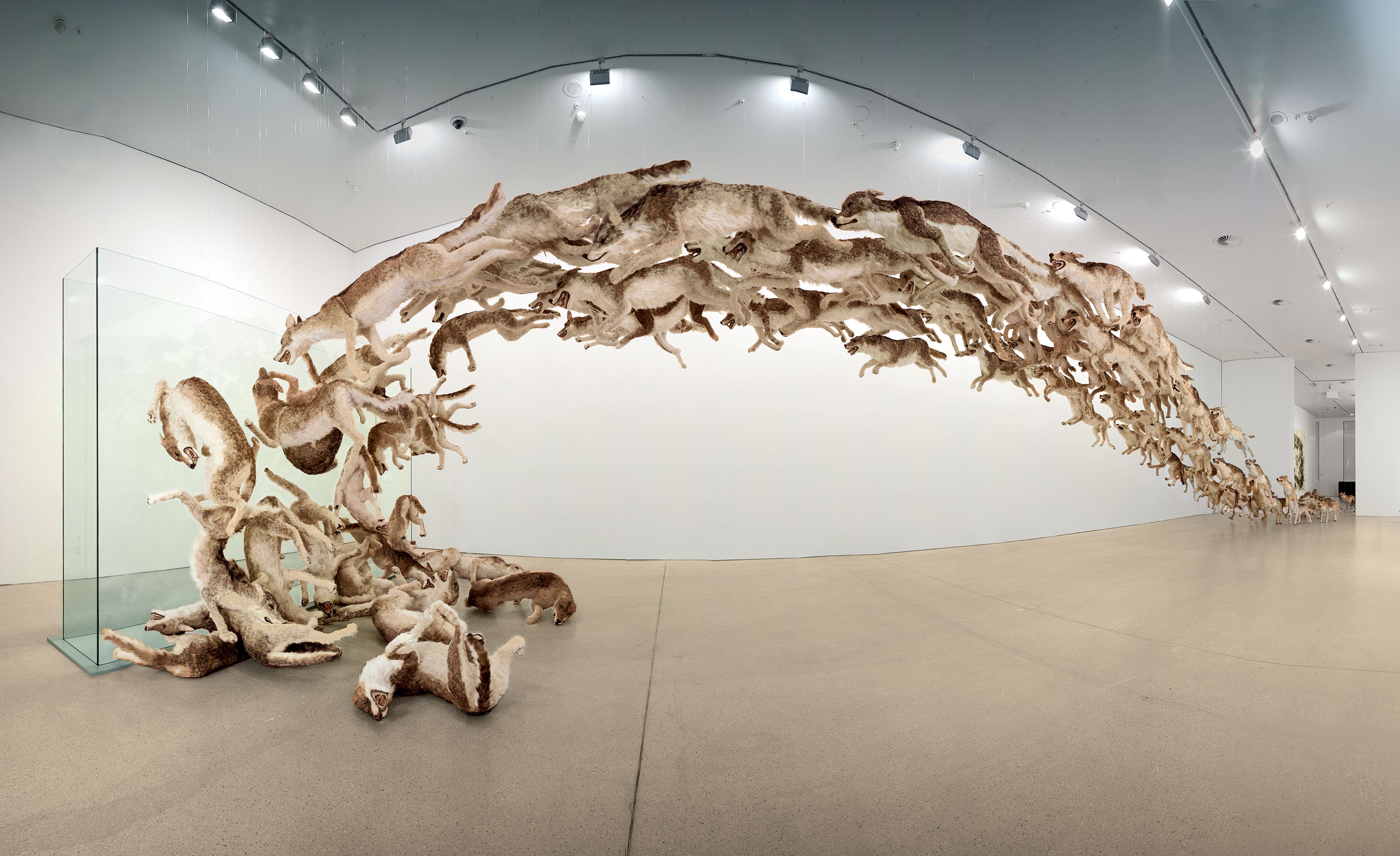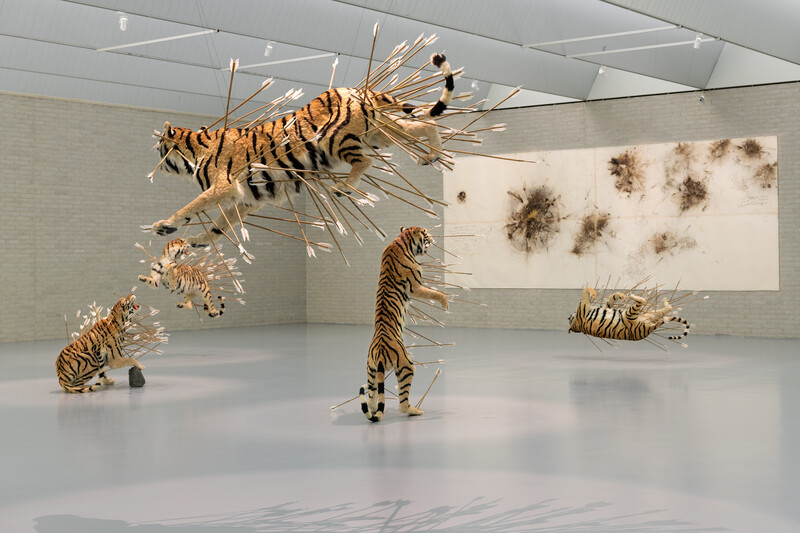Artist Cai Guo-Qiang's work is a literal explosion of color and emotion-- the Chinese expatriate is best known for gunpowder-scorched paintings and energetic firework events that often span hundreds of feet in size. Cai’s full body of work spans many mediums, including sculpture, performance, installation, and video. He aims to draw “upon Eastern philosophy and contemporary social issues” to create art that explores cultural differences and our relationship to nature.
 Head On - 2006 - Cai Guo-Qiang - link (opens new window)
Head On - 2006 - Cai Guo-Qiang - link (opens new window)
One particular subset of Cai’s work involves hyperreal animal sculptures living and dying in manmade situations (Head On; Heritage 2013; Move Along, Nothing to See Here; etc). These pieces evoke questions about the creatures we share the planet with-- how is climate change interfering with the lives of animals? As the planet warms, many niches and habitats are drying up, melting, or disappearing, leaving fauna with increasingly small resources to support themselves. As a result, species extinction rates are currently 100-1000 times faster than the standard rate of extinction in Earth’s history, according to the 2018 World Wildlife Foundation Living Planet Report[1]. Additionally, there was a 60% decrease in populations of vertebrates between 1970 and 2014, and numbers have only sunk since then. Without a diversity of life in the world, we risk the collapse of not only wild ecosystems but also our own agricultural systems and infrastructure.
 Inopportune: Stage Two - 2004 - Cai Guo-Qiang - link (opens new window)
Inopportune: Stage Two - 2004 - Cai Guo-Qiang - link (opens new window)
Editor’s note: Partially inspired by the 2013 incident when overwhelmed farmers dumped over 16,000 dead pigs into Huangpu River, Cai’s 2014 exhibition The Ninth Wave featured a rundown fishing boat crowded with strikingly lifelike replicas of dead animals, floating aimlessly against a smoggy backdrop of the Shanghai skyline. A clear reference to the biblical tale of Noah’s Ark, Cai harshly implies that even our holiest intentions may not be enough to save life as we know it from the impacts of human consumption. For me, this piece was a bleak reminder of a summer visit to my grandparents in Beijing some years ago, where the air was so polluted that I didn’t see a blue sky for the duration of my month-long trip. While the air quality has since improved, China is still the world’s top producer of carbon dioxide emissions.
